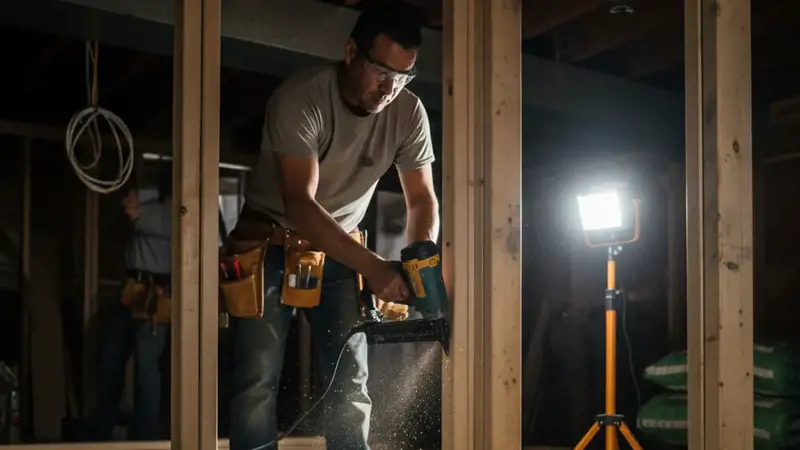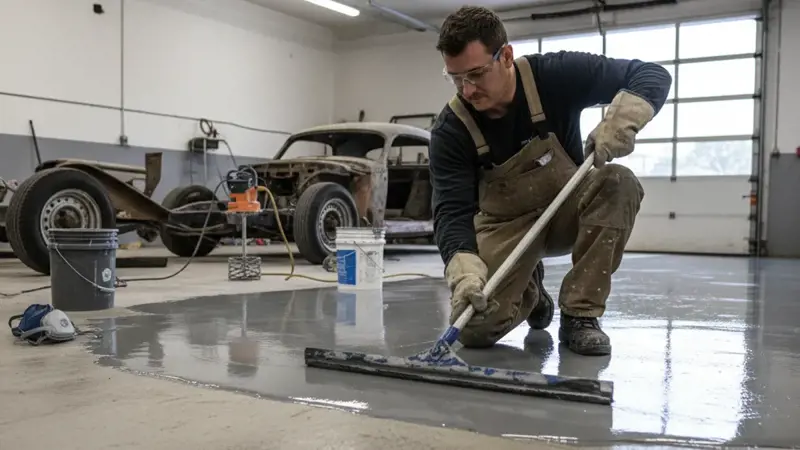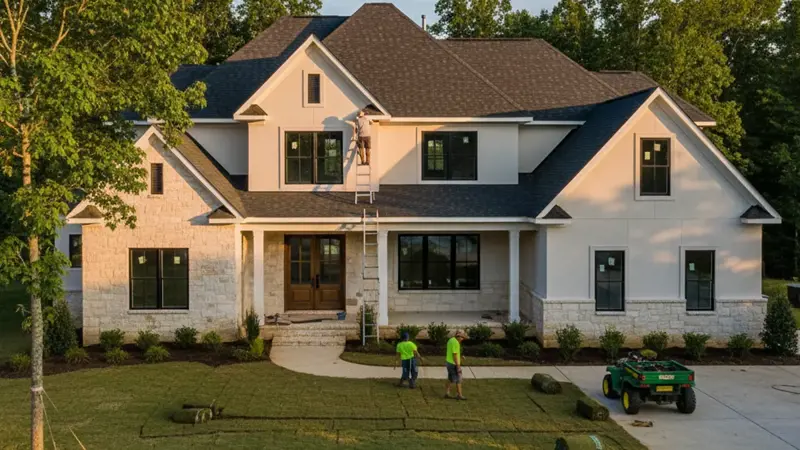A cozy family room, a home office, or even a guest suite are all some functional spaces that you can transform your basement into. These additions can increase the value and usability of your home. However, basement remodeling can lead to significant costs if not planned carefully. For new contractors and first-time homeowners in the US, understanding the costs of basement framing and insulation is very important to avoid financial shocks.
In this guide, we will break down the costs of framing and drywall insulation, helping you make a wise decision by addressing key concerns, providing practical examples, and offering a valuable cost breakdown to ensure your project is completed effectively and with the least budget overruns.
Understanding Framing Costs
Framing forms the structural skeleton of your basement, defining the walls, ceiling, and overall support systems. There are many factors that can impact basement framing costs, such as design, materials, and other features. However, understanding the specifics can help you set an accurate budget.
How Much does it cost to frame walls in a basement?
The cost of basement framing can be estimated in several ways. Still, it's essential to remember that these averages are subject to fluctuations based on your location, labor rates, and specific project details.
- Per Linear Foot: $7 to $15 per linear foot for wooden studs and $8 to $18 per linear foot for metal studs.
- Per Square Foot: $1 to $5 for basic wall framing and $3.00 to $5.00+ per square foot for complex framing.
For example, an 800-square-foot basement with 200 linear feet at $10 per linear foot would cost around $2,000 just for walls and $1,200 to $4,000 for ceiling framing.
Factors Significantly Impacting Framing Costs
Many factors can drive the cost to frame walls in a basement:
- Layout Complexity: Open layouts with fewer walls are generally less expensive, ranging from $2.50 to $6.25 per square foot. While multi-room designs will cost $6.25–$12.50 per sq ft. Due to more walls, more materials, and more openings.
- Wall Design: Walls usually come in two major designs: straight walls, which are typically cost-effective, and curved walls, which, due to the use of specialized materials, increased labor, and the need for bending, would add 20-50% to the final cost.
- Ceiling Height: Taller walls, measuring 9 to 10 ft., require longer studs and potentially more bracing, which can increase the cost by 10-20%.
- Existing Conditions: Any demolition, leveling of uneven floors, or work involving existing pipes or ductwork will add to the cost.
- Region: Each region can have its unique labor rate, mandatory permits, and special building codes.
Framing Materials: Wood vs. Metal Studs
The choice of framing material impacts not only cost but also performance, durability, and ease of installation.
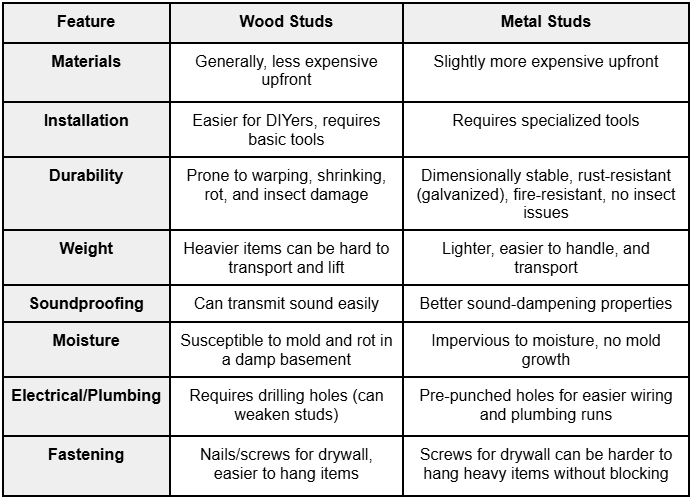
As you can see, for basements prone to humidity, such as those in regions like Florida, metal studs are a better option in terms of mold and rot resistance. By doing so, you can save $1,000 to $5,000 in future repairs. You should also consider other factors, such as whether the materials are available in your region, how to schedule material delivery, and storage costs.
Additional Framing Needs
- Support for Heavy Fixtures: For TV mounts and shelves, you need additional reinforced framing, such as studs or blocking, to support the weight. This model costs around $500 to $2,000.
- Pocket Doors: can add $300 to $1,000 per door due to specialized framing needs and hardware.
- Built-ins: Custom framing within the wall cavity is required for shelving or cabinets that can increase the cost by $1,000 to $3,000.
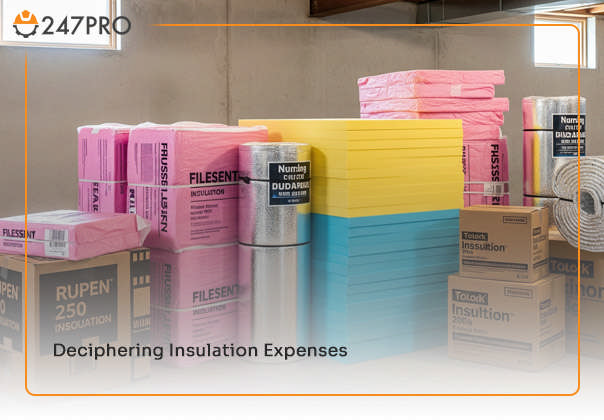
Deciphering Insulation Expenses
Insulation is critical for having a comfortable, energy-efficient, and moisture-controlled basement. However, the cost can vary widely based on material type and local requirements. Proper insulation can lead to significant long-term savings.
Types of Basement Insulation and Their Average Costs

Which Insulation Type Provides the Best Value for Money?
- Spray Foam: Offers the highest insulation performance with an R-value of 6-7 per inch. It can act as a vapor barrier, resulting in a 20-30% reduction in energy bills ($500-$1,000 per year). Although the initial cost is high, it will result in long-term savings.
- Rigid Foam: Balances cost and performance with an R-value of 4-5 per inch. It is ideal for basements with moderate moisture issues.
- Fiberglass: This is the most affordable option; however, it requires additional vapor barrier, which can add $500 to $1,500, and it’s less effective in humid climates like Florida.
R-Value Requirements and Cost Impact
Most building codes in the US require R-13 to R-19 for basement walls, and in colder states like Minnesota, R-15 to R-21 is recommended. Higher R-values typically indicate thicker insulation, multiple layers, or more expensive insulation types, such as spray foam. Check the local codes through the VAA lid and a trusted website, or consult with construction project management firms.
Higher R-values can increase the cost by 10-20%. For example, upgrading from R-13 to R-19 with spray foam can add $800 to the final cost.
Moisture Control and Vapor Barriers
- Concrete: Basements are prone to moisture, so you need vapor barriers to resist the diffusion of moisture, which can cost $0.50 to $1.00 per square foot.
- Solution: Spray foam includes a built-in vapor barrier that can save up $800 compared to fiberglass, which needs a separate barrier.
- Drainage and Waterproofing: Before any framing or insulation, ensure that your basement's exterior and interior waterproofing are in good condition.
- Hidden Cost: Failing to overcome the structural issue can lead to old remediation that costs $1,000 to $5,000, with an additional $500 to $1,500 for a dehumidifier.
Here is an example of insulating an 800-square-foot basement in Seattle for a family room.
- Scope: Spray foam for walls, R-15, with a vapor barrier and dehumidifier.
- Cost: $2,100-$5,100
- Spray Foam: $1,600-$3,600
- Dehumidifier: $500-$1,500
- Contingency (10%): $200-$500
- Challenge: due to the damp climate of Seattle, spray foam is required to prevent mold that can add $1,000 but save $2,000 in future remediation
Beyond the Basics: Hidden & Related Costs
Basement renovation often involves hidden costs, such as waterproofing and permitting, as well as unexpected issues that can quickly and significantly impact the budget. Understanding these costs and preparing to prevent and overcome them can help avoid major financial surprises. For a more comprehensive and detailed exploration of these expenses, we highly recommend reading "The Ultimate Guide to Basement & Garage Finishing Costs" to ensure you account for all potential surprises.
Garage renovation can also be tricky when it comes to hidden costs; the mentioned article can help you use a garage construction cost estimator to predict and overcome these costs.
Value & ROI
Finishing your basement is an investment that can significantly improve your home's value by 50-70% of the renovation cost. A well-framed and insulated basement, which might cost $20,000 to renovate, can add a $10,000-$14,000 value increase. Converting the basement to a living space, such as a bedroom, can further boost ROI, but ensure it is in accordance with local codes.
High-performance insulation, such as spray foam, can reduce energy consumption by 20–30%. This means the initial investment can typically be fully recovered within 3 to 7 years. You can use the building construction cost calculator to estimate potential savings based on your location and energy rates.
